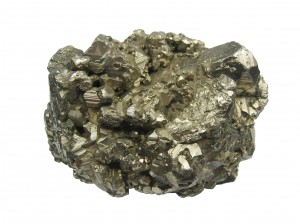WEDNESDAY, 25 JULY 2012
Fool’s Gold is also known as iron pyrite; an iron and sulphur mineral. It is the sulphur component of this compound that has traditionally been portrayed as regulating the atmosphere through chemical changes with carbon and oxygen. While collating a global sulphur cycle database on oceanic rock spanning the last 550 million years, a collaborative effort between the Weizmann Institute’s Environmental Science and Energy Research, the University of Wisconsin and the California Institute of Technology have discovered that the role of sulphur may have been under-estimated.Previously, it was thought that a main part of the cycle was regulated by sulphur evaporite minerals (for example gypsum) which form and sink to the ocean floor allowing sulphur to exit the seawater into underlying rock. Over the last 550 million years the researchers found that although the amount of sulphur processed in this way was highly variable thanks to changes in shallow sea area, only a small percentage of sulphur was cycled in this way. It was actually the formation of pyrite which was important.
Pyrite is formed when microbes use seawater sulphur to digest plant and animal matter; consuming suphate (which contains oxygen) and releasing sulphide (no oxygen) in the process. As a result, oxygen is released into the air. Pyrite formation was originally thought to be much less significant than the sulphur evaporite process, but this study has found that Fool’s Gold now accounts for more than 80% of the sulphur removed from oceanic waters. This research highlights the fine balance between the breakdown and weathering of exposed pyrite on land which releases sulphur into the sea and its microbe-derived formation which entraps it. Unlike sulphur evaporite minerals, the generation of pyrite has remained fairly constant, helping to stabilize atmospheric oxygen levels.
DOI: 10.1126/science.1220224
Written by Joanna-Marie Howes.

